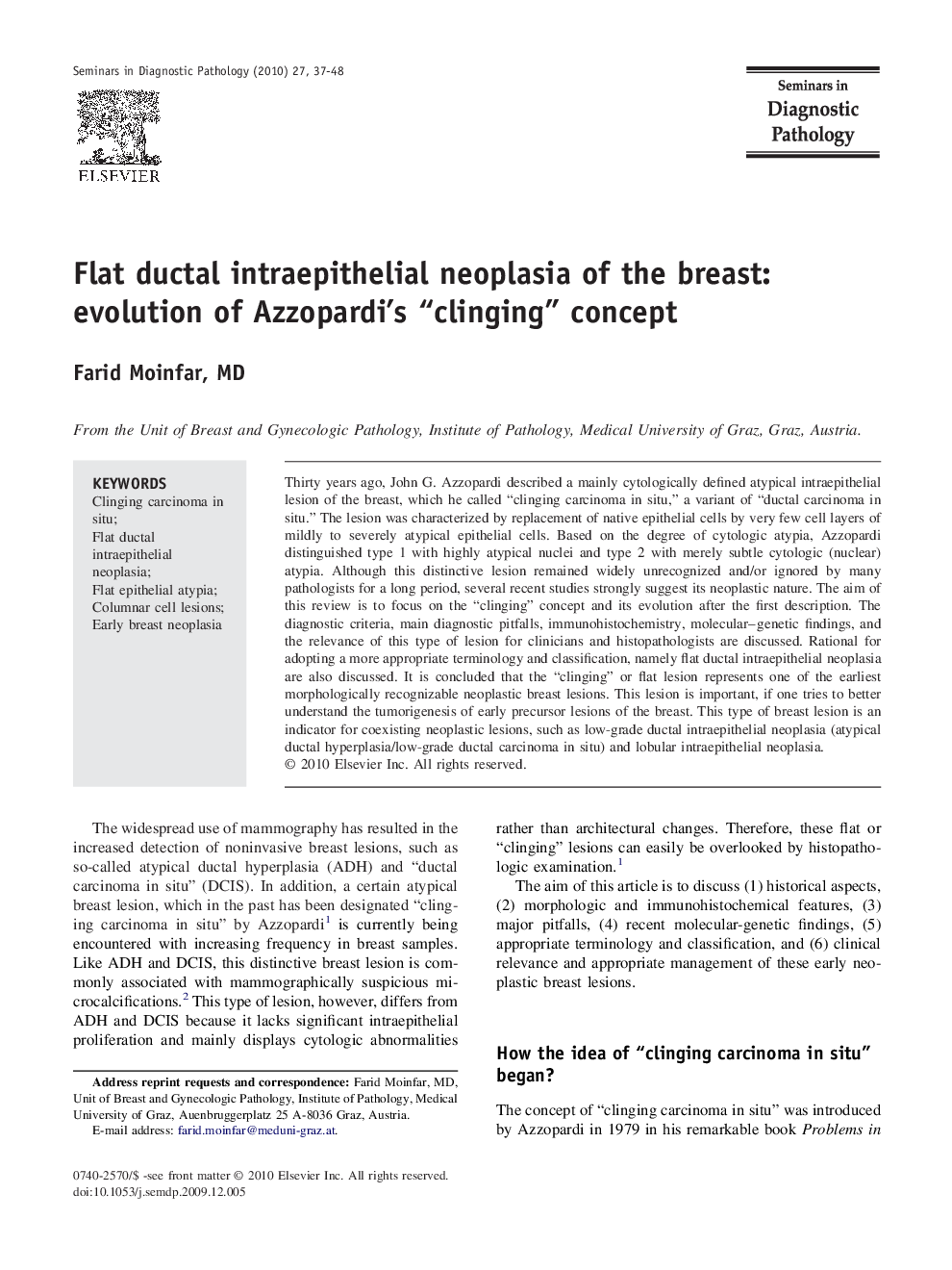| Article ID | Journal | Published Year | Pages | File Type |
|---|---|---|---|---|
| 4138477 | Seminars in Diagnostic Pathology | 2010 | 12 Pages |
Abstract
Thirty years ago, John G. Azzopardi described a mainly cytologically defined atypical intraepithelial lesion of the breast, which he called “clinging carcinoma in situ,” a variant of “ductal carcinoma in situ.” The lesion was characterized by replacement of native epithelial cells by very few cell layers of mildly to severely atypical epithelial cells. Based on the degree of cytologic atypia, Azzopardi distinguished type 1 with highly atypical nuclei and type 2 with merely subtle cytologic (nuclear) atypia. Although this distinctive lesion remained widely unrecognized and/or ignored by many pathologists for a long period, several recent studies strongly suggest its neoplastic nature. The aim of this review is to focus on the “clinging” concept and its evolution after the first description. The diagnostic criteria, main diagnostic pitfalls, immunohistochemistry, molecular-genetic findings, and the relevance of this type of lesion for clinicians and histopathologists are discussed. Rational for adopting a more appropriate terminology and classification, namely flat ductal intraepithelial neoplasia are also discussed. It is concluded that the “clinging” or flat lesion represents one of the earliest morphologically recognizable neoplastic breast lesions. This lesion is important, if one tries to better understand the tumorigenesis of early precursor lesions of the breast. This type of breast lesion is an indicator for coexisting neoplastic lesions, such as low-grade ductal intraepithelial neoplasia (atypical ductal hyperplasia/low-grade ductal carcinoma in situ) and lobular intraepithelial neoplasia.
Related Topics
Health Sciences
Medicine and Dentistry
Pathology and Medical Technology
Authors
Farid MD,
